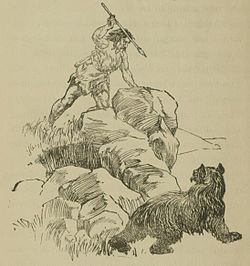Have you ever been told that you were not allowed to do something because of your gender? Congratulations to those of you who answered no and to those of you who answered yes, I am sorry for the ignorance of mankind. Sadly, I have been a victim of cognitive discrimination. I remember the first time I asked my brother if I could play Counter-Strike (a first-person shooter game). He just laughed and told me to go play with my teddy bear. He told me that girls weren’t allowed to play games because they didn’t have the ability to do so. Thankfully, he was “joking” around, but this comment was still very rude and inconsiderate. Although he eventually let me play the game, the fact that he made such a remark about a girl’s incapability in playing these types of games shows a lot about the common beliefs society teaches people to believe. Have you ever questioned why males are always associated with roles involving spatial tasks? It’s because a lot of ignorant people choose to accept unproved beliefs that people think are true. Although some may argue that talents are inherent, spatial ability is not really a fixed trait and it can be taught to both genders equally. Biological and evolutionary claims are simply hypotheses, so it is only necessary to be skeptical of these claims. Rather than focusing on trying to solve a puzzle that has a missing piece, also known as the Why questions, we should be focused on helping the current generation of females through proper education.
Ignore the biological and evolutionary claims (AKA the Why)
Overall, it is hard to accept spatial ability as something that is inherent through claims that are still undergoing research. Dating back to the Stone Age, cave men were generally believed to be hunter-gatherers. This job required them to build the skills necessary to aim and catch food. Scientists assumed that spatial ability occurred based on these observations. However, hunting isn’t the only task that requires spatial ability. In “Taking Science Seriously,” Newcombe points out that cavewomen were the gatherers. They had to wander through paths and travel long trips for vegetation, which would require spatial ability as well. Her assumption makes sense and shows a possibility that spatial ability was used equally by each gender. However, there are shortcomings with this argument as well because in an article called “Human Body And Mind,”(bbc.co.uk) researchers suggested that females relied more on landmarks when they went to gather food. Meaning, spatial ability was not needed. Although both assumptions seem to fit the puzzle, sadly there is no exact data that supports any of these hypotheses.
If we go back a couple of chapters, we will find Kimura’s research highlighted that “prenatal and current levels of sex hormones…” have something to do with cognitive sex differences. The widely accepted biological explanation is that women have better spatial ability during menstruation and men have better spatial ability when they have low testosterone levels. There may be a biological framework; however, there is no sociobiological reasoning. Newcombe believes there should be no advantage in improved spatial ability in females when they are infertile and no benefit for men with low testosterone levels. This important claim shows the possibility that spatial ability has nothing to do with any biological factors. However, as much as I want to believe this claim, this is simply Newcombe’s own assumption and she fails to provide any data that shows none of these reasons matter. In fact, in an article I read online it stated, “The reduction in sexual function was strongly associated with reduction in serum testosterone [levels]…”(webmd.com) The biological reasoning behind why males have more increased spatial ability during times of low testosterone level may connect to this idea that in order to carry on the genes, the brain signals increased spatial ability so that males could find their mating partners with more ease. Once a man mates with a woman, a male’s testosterone level will be likely to increase. However, there is “a stumbling block” with my reasoning because I don’t have enough data to support my reasoning. I am merely making assumptions. Overall, it is hard to accept spatial ability as something that is inherent through claims that are still undergoing research. Newcombe’s explanation of how sex differences may or may not exist leads me on to my next point, which is the need to focus on changing the education system. Rather than finding reasons that may show whether these cognitive differences exist, we should be focusing on how to prevent women from being so underrepresented in STEM through proper education.
Instead of why let’s ask how?
After Newcombe provides her own opinion answering the why questions, she leads to her next point, which is answering the “how.” Her answer to the how question is that we must educate people about spatial ability properly in order to help improve more representation of women in STEM. She concludes that the reason for such underrepresentation is due to lack of structured education we give to females of all ages. She then provides a solution to this by claiming; “spatial ability can be taught,” leading to more females feeling more confident in the STEM field. One of the reasons why females are so underrepresented in STEM is because they feel intimidated by these pre-conceived ideas of how hard jobs in the math and science field are, such as engineering. During our first talk with Julie Elberfeld, she pointed out that women quit mid way because they did not feel that they would be capable enough to make it working as an engineer. However, like Newcombe suggests, if we teach women more about spatial ability it will build them more confidence and make them prepared for anything. Overall, Newcombe’s research shows a benefitting trend when spatial ability is taught in a more correct manner.
- A meta-analysis was done that showed the effects of simple practice and also of training on improvements in spatial ability. (Baenninger and Newcombe, 1989)
- A research showed that being in school was associated with greater spatial growth in elementary school children than being on summer vacation
- Undergraduate students learned mental rotation, and found an improvement with no sign of leveling off.
- Another study was shown that showed improvement in spatial skills for both children and adults through academic coursework, task-specific practice, musical training, and playing computer games (Marulis, Warren, Uttal, and Newcombe, 20005)
Although I agree with Newcombe’s reasoning of needing to reteach people, I don’t think we should solely focus on spatial ability, but take into consideration other factors such as teaching from an incremental perspective. I found some parts of her research questionable. I was quite skeptical of her second and fourth research because I couldn’t find myself to completely agree with the results. In the second research, Newcombe was not really specific in identifying whether these groups of children they were observing were female, male, or both genders. I find it common logic that knowledge increases if people continue to learn, so I don’t find it as surprising that children improved their spatial skills during the school year as opposed to the summer. Also, from chapter four of Why Aren’t More Women in Math and Science, Spelke and Grace point out that research showed there were no cognitive differences including spatial ability in younger children. So, maybe the increase had something to do with the fact that children are prone to performing equally because there has not yet been a wide distinction in ability that has developed. I thought that the fourth research didn’t explain why this specific way of training helped. Newcombe doesn’t give more detail about other social factors, such as whether people believed ability was inherent or a gift. In Dweck’s research, she found that the vulnerable students were the ones who saw ability as fixed causing them to perform worse when hit with challenges. She also points out the importance of educating children that ability can grow, which is something we should also focus on in the education system. Dweck’s research showed there was only a very small gender gap present when females were taught that ability was not fixed. We shouldn’t solely focus on improving spatial ability because there is a social factor involved as well. Slide 24 of the Why so Few Women in Science power point also shows how negative stereotypes about gender ability impact performance on math tests. I agree that spatial ability should be taught in a way that gives females more confidence, but I also believe that since there are also other sociobiological factors involved, teaching people from an incremental perspective is important as well.
With the current data we have, it is hard to say that sex differences do no exist without any supporting evidence. However, based on Newcombe’s assumptions and emphasis on education, I believe that the key to improving underrepresentation is attacking the problem rather than question why this problem even exists. We could go around in circles all day trying to think of answering why there may be a sex difference. However, solving the root of the problem will change how women in STEM are represented in the future. Overall, Newcombe does a great job in challenging people to think of other possibilities and arguments for claims that are commonly accepted without any solid data/evidence. She helped me think from multiple perspectives and ask the right kind of questions.
Sources:
– Why Aren’t More Women in Math and Science by Ceci and Williams
– http://www.bbc.co.uk/science/humanbody/sex/articles/spatial_tests.shtml
– http://www.webmd.com/men/news/20150313/more-sex-better-testosterone-levels
Image Sources:
– https://en.wikipedia.org/wiki/Caveman (caveman picture)
– http://preston.lib.mn.us/storytime/storytime-teddy-bears-picnic/ (teddy bear picture)
– youtube.com (counter-strike picture)


